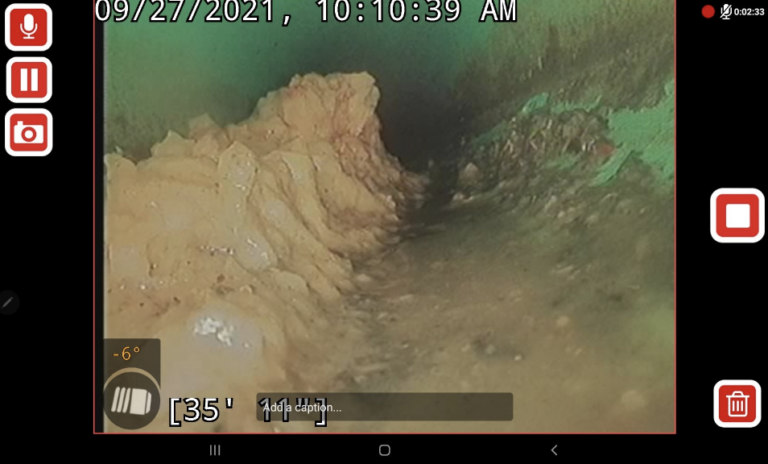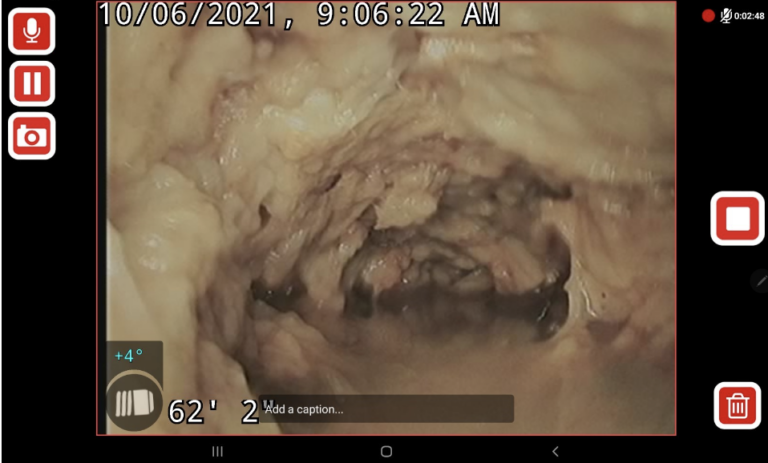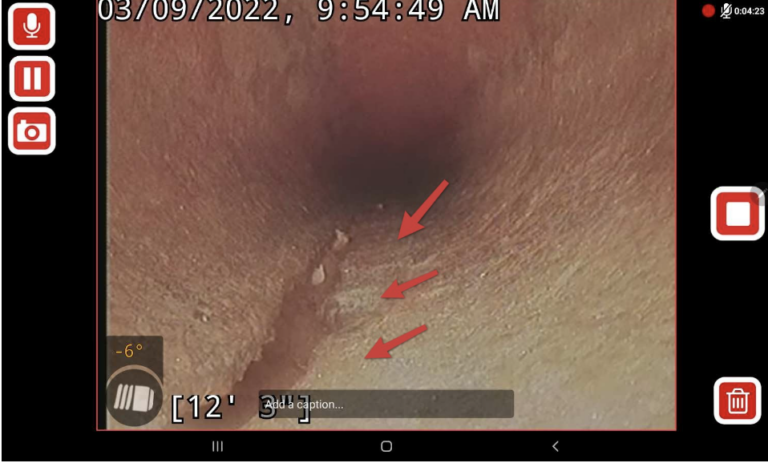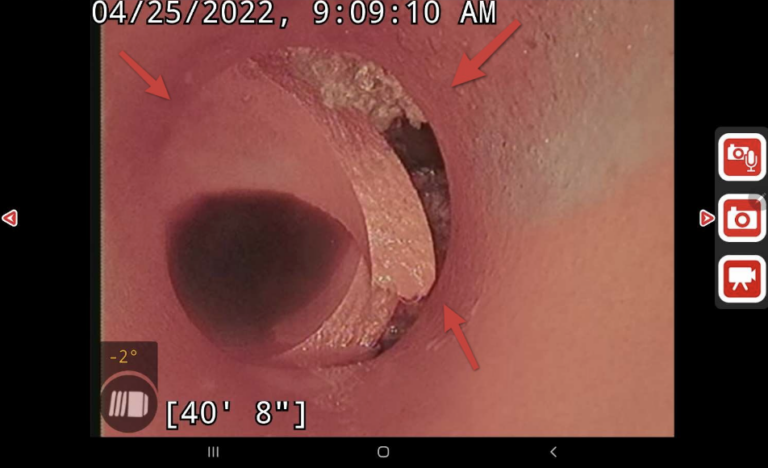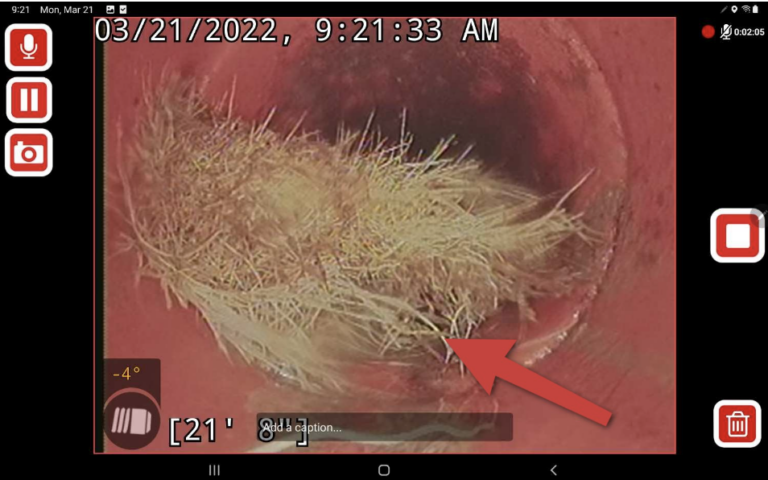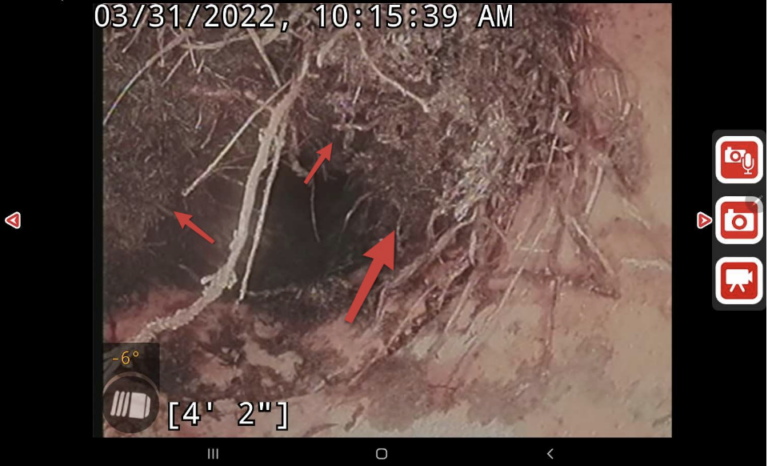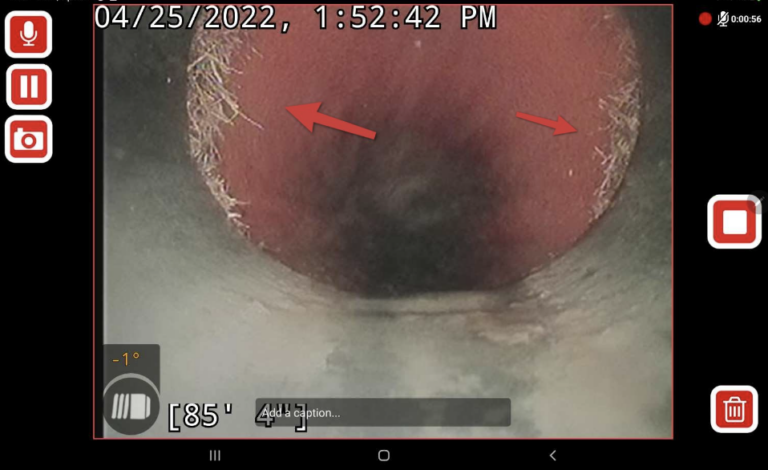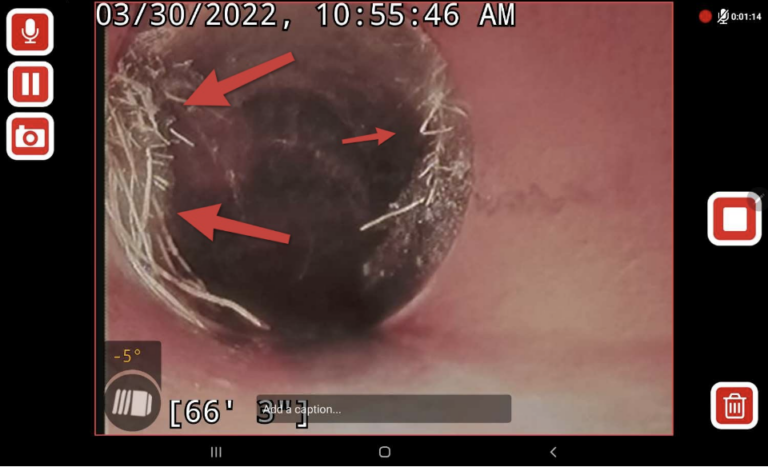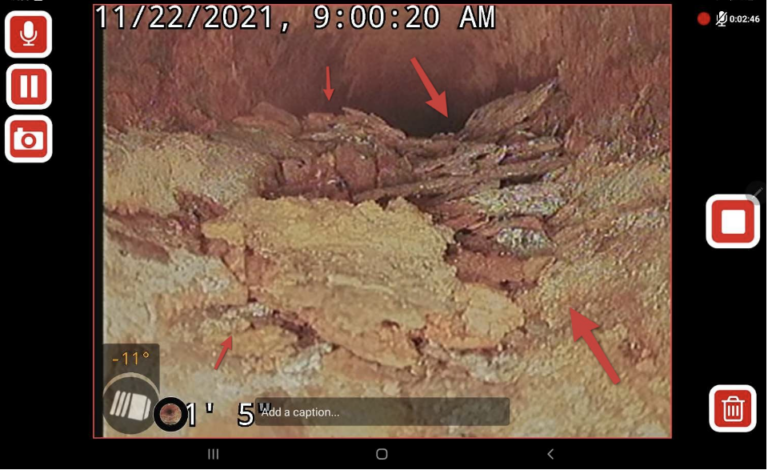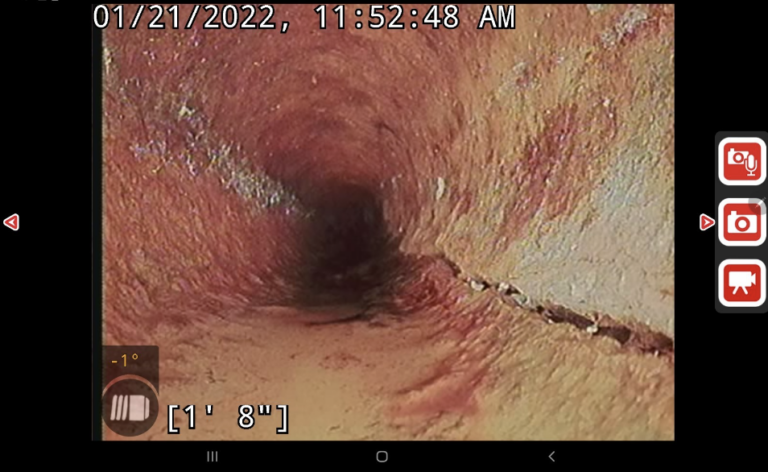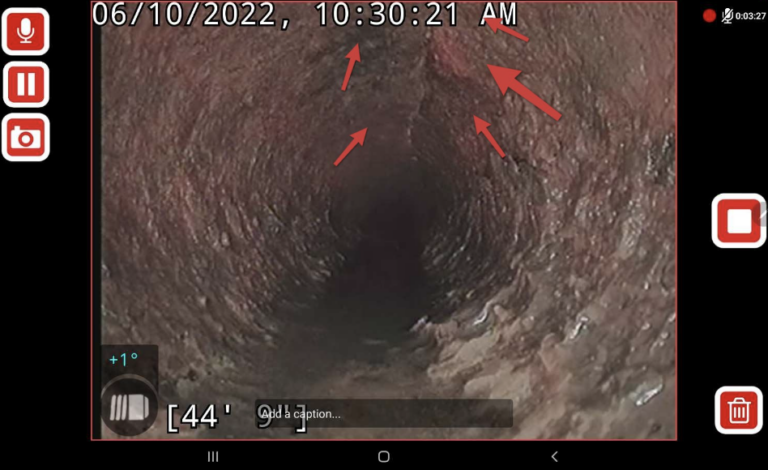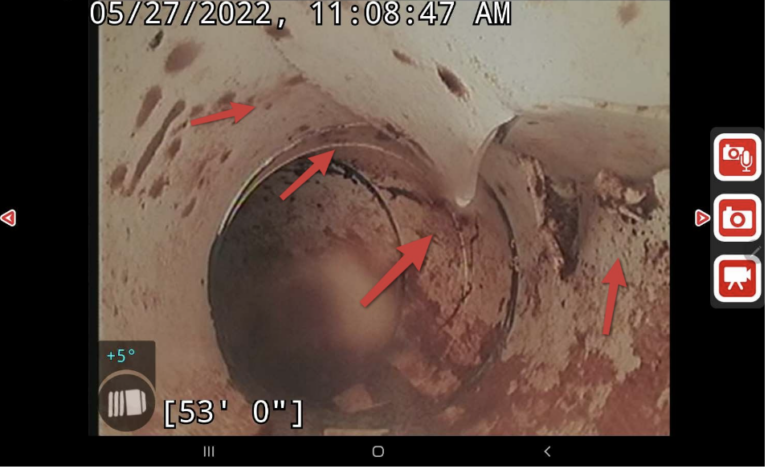Sewer Line Inspection
A sewer scope is a visual inspection of the main sewer line of the home/building which utilizes specialty camera equipment. During this process the sewer line is evaluated with a high-definition camera for defects, common adverse findings, and determination of pipe material.
Sewer Line Inspection
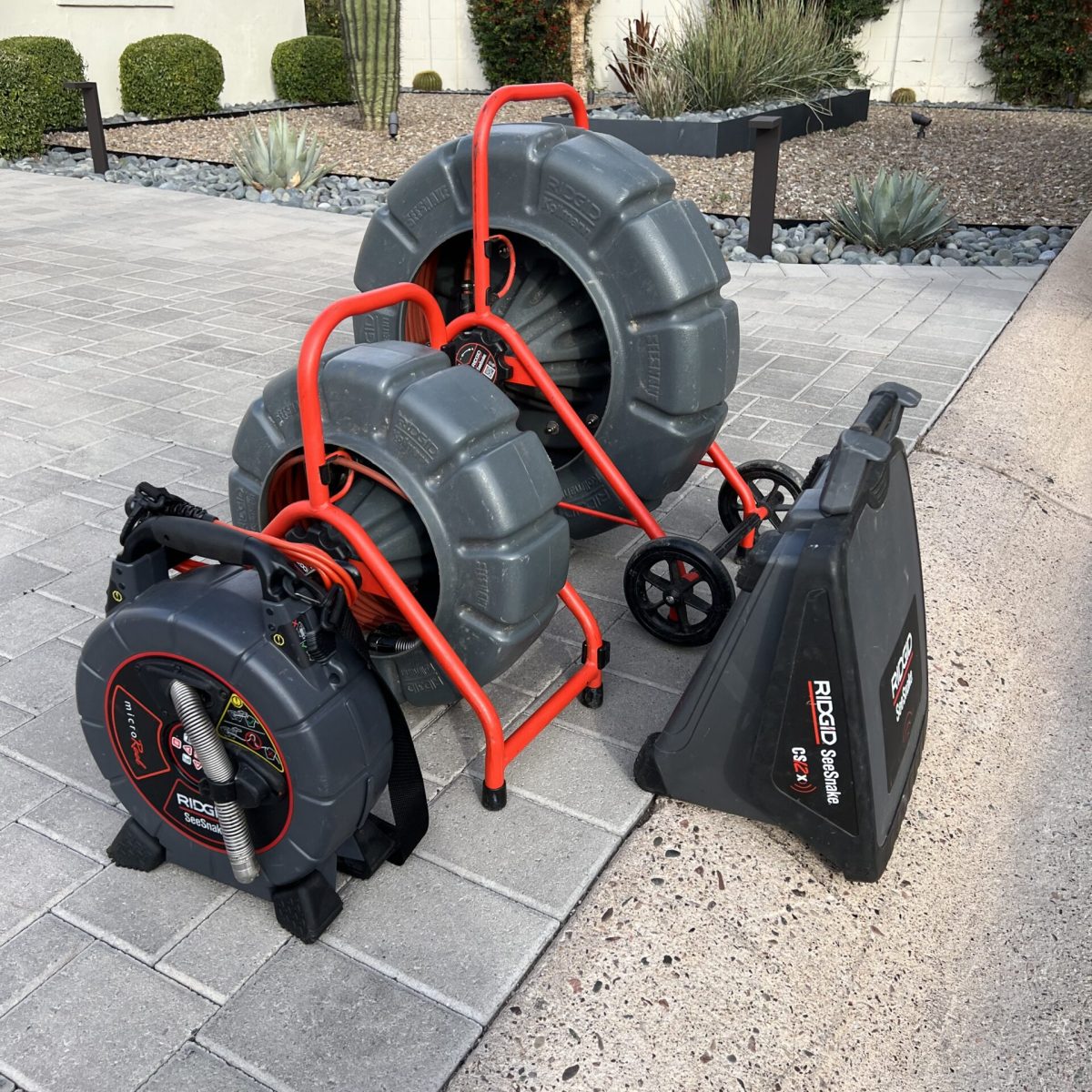
Sewer systems are a very out of sight out of mind aspect of a home until there is an issue. These issues can be extremely costly, inconvenient, and damaging to your home if left unaddressed or undiscovered. Sewer line issues and defects are not only found in older homes, but homes of all ages and even found in new builds. Homes utilizing septic systems also should be scoped.
- Root intrusion
- Cracked/damaged pipes
- Rust/scale
- Belly/sagging pipes
- Sludge buildup
- Offsets/shifted pipes
- In these instances, a toilet will need to be removed by a plumbing professional to access the sewer line with the camera.
- Improper installation
- Foreign objects/construction debris
- Orangeburg (recalled piping material)
It is important to note that no house is perfect. At the end of the sewer line inspection, we will provide a detailed report that describes the physical condition of the observable sewer line with images and video highlighting what may need repair or replacement. Some defects can be resolved or regularly maintained through sewer line hydrojetting, while others may require a more involved repair/replacement.
Root intrusions are a common find in sewer lines. Any occupied home has a steady and consistent flow of water through the drainage system. Roots of all types are attracted to the consistent source of water and will seek out seems or cracks to access it.” Then add “Root intrusions can clog the sewer line or damage the pipes. Hydrojetting can be a cost effective way to temporarily remove roots until sewer line repair or replacement becomes necessary.
Older homes with outdated sewer materials are more susceptible to root intrusion. As metal pipes corrode over time, they become rusted and brittle, once worn through the roots will begin to find the water source and move in through these voids.
Clay and concrete sewer pipe are made in very short sections creating many joints in the sewer line. These sections of pipe were most commonly joined by only a thin rubber gasket, once this gasket has failed or worn out it leaves numerous opportunities for growth.
Transitions of pipe materials are also a very common place to find roots. When transitioning materials many times the only way to make the connection is with a rubber coupling. Over time these connections can be damaged, become loose, and wear out leaving a clear pathway for roots to move in.
Once roots are present in a sewer line they will continue to grow until the pipe is closed off and completely overtaken.
Action Item FAQs
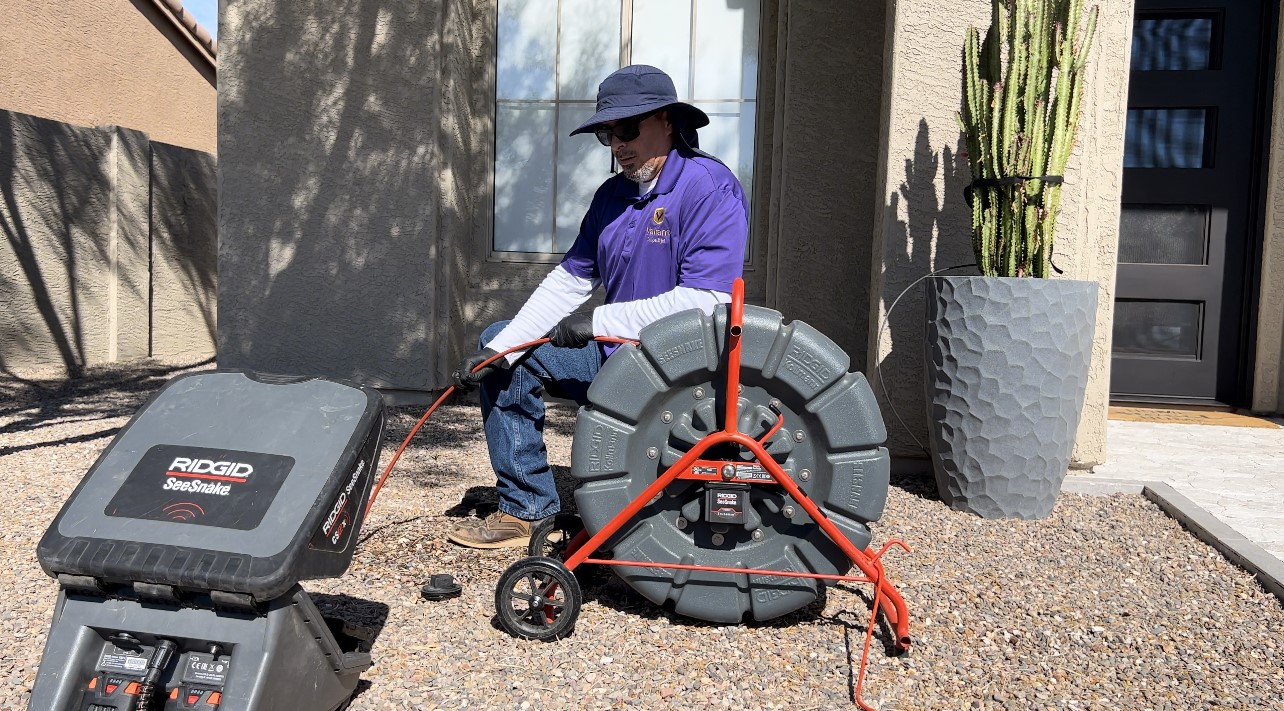
Cast iron pipes begin to rust after years of being exposed to water and moisture. As this process happens the rust deposits can become very rough and jagged, causing paper and waste products to stick or slow down when traveling through the sewer system, ultimately leading to blockages and narrowing of the pipe.
Clay and concrete sewer pipe are made in very short sections creating many joints in the sewer line. These sections of pipe were most commonly joined by only a thin rubber gasket, once this gasket has failed or worn out it leaves numerous opportunities for growth.
Transitions of pipe materials are also a very common place to find roots. When transitioning materials many times the only way to make the connection is with a rubber coupling. Over time these connections can be damaged, become loose, and wear out leaving a clear pathway for roots to move in.
Once roots are present in a sewer line they will continue to grow until the pipe is closed off and completely overtaken.
There are a number of factors that can contribute to pipe damage including: roots, age, construction damage/interference, settling of the ground, etc.
Clay and concrete sewer pipe are made in very short sections creating many joints in the sewer line. These sections of pipe were most commonly joined by only a thin rubber gasket, once this gasket has failed or worn out it leaves numerous opportunities for growth.
Transitions of pipe materials are also a very common place to find roots. When transitioning materials many times the only way to make the connection is with a rubber coupling. Over time these connections can be damaged, become loose, and wear out leaving a clear pathway for roots to move in.
Once roots are present in a sewer line they will continue to grow until the pipe is closed off and completely overtaken.
Belly is a common term used in the plumbing industry to describe what occurs when there is a significant sag in the sewer line. A sewer line is supposed to follow a steady decline to allow the water, paper, and waste to flow all the way out of the sewer to the point of termination. If the sewer line does not follow a smooth decline and has a low spot it causes the contents to climb. In some instances, the belly in the line can be severe leaving standing water to stay in the sewer at all times. When water is unable to leave the pipe, anything put into the drainage system will be slowed down by the standing water and start to collect. Over time the collection of paper, waste, and all other products can lead to blockages and severe restriction of flow.
Sludge is a broad term that encompasses a variety of types of buildup found in drains. This buildup can consist of everything put down any drain in the house from waste, food, soaps and detergents, beauty products, toothpaste, cooking waste, and anything else that makes its way down the drain in your home. Significant buildup throughout the line can obstruct the view of the camera and hide any defects that may be present in the sewer. Once this sludge buildup reaches a significant point it will also slow down drain function and ultimately lead to blockages.
Offsets occur when a joint in the pipe does not line up properly with the next. Offsets can occur from improper installation, normal expansion and contraction of the soil, weight of traffic, and root system pressure. An offset acts as a speed bump in the drain system causing waste products to slow down and can contribute to blockages. In some cases, offsets can be severe enough to completely restrict the flow on their own.
Older homes are not the only candidates for sewer problems, improper installation of sewer components and improper grading can lead to a belly in the line or restricted flow. Repairs done by underqualified individuals or done incorrectly are often found and lead to issues.
Many times during construction or a remodeling process accidents and negligence can lead to foreign objects falling into drains, building materials, and construction debris. Any of these items can lead to severe sewer issues and blockages.
Orangeburg pipe is a type of sewer line used in many properties built from 1945 to 1972. Orangeburg is a type of bituminized fiber pipe made from a mixture of hot pitch and wood pulp. Orangeburg pipes absorb moisture and become distorted, oftentimes in an ovular shape, under pressure. Layers of this material are also subject to bubbling up and closing the pipe off. Once Orangeburg begins to fail it is typically a very fast process.
What Else Can We Answer?
At Valiant Scope & Jet, our job isn’t complete until you feel comfortable and all of your questions and concerns are addressed.
What Else Can We Answer?
At Valiant Scope & Jet, our job isn’t complete until you feel comfortable and all of your questions and concerns are answered.

